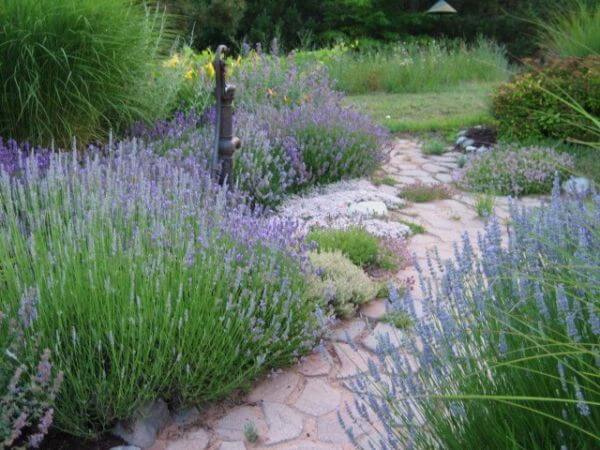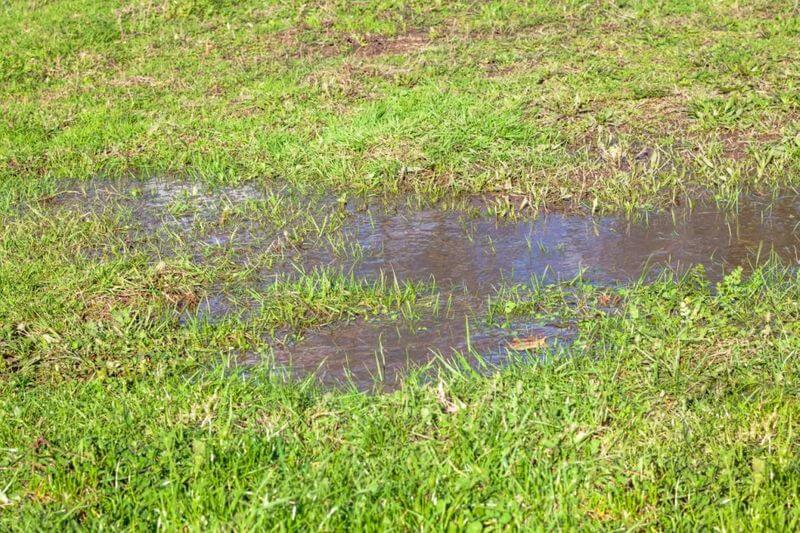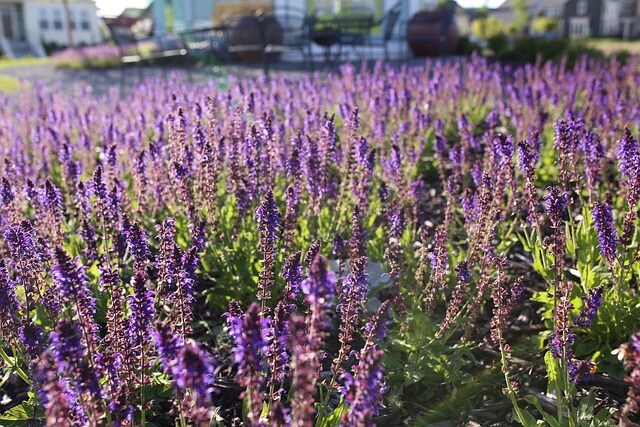There are many reasons why you may want to plant cover of lawn turf over your drain field.
Perhaps you are looking to mitigate soil erosion or want to boost the efficacy of your septic system by optimizing oxygen exchange.
You may also be looking for ways to accentuate your yard.
While there are certainly myriad reasons why you may want to have some vegetation cover your drain field, it is important to note that not all plants are recommended over or near your drain field.
Some plants have root systems that pose a threat to the long-term functionality of your drain field.
I am certain that you are not ready to deal with effluent surfacing in your yard, not to mention the costs you are likely to incur to address such inconveniences.
Is lavender among the plants that shouldn’t be planted over or near a septic drain field?
Plant Types to Avoid as Drain Field Groundcovers
First, let’s understand why some plants should be avoided when it comes to ground cover to grow over or around a septic system.
Plants with aggressive, water-loving, or deep root systems may tap into your drain field pipes, causing damages that can be messy and expensive to repair.
So, any plant that falls in this category should never be grown over or around your septic drain field.
The best choice of plants to grow over/near your septic system are herbaceous plants like annuals, perennials, and ornamental grasses due to their shallow root systems.
Lavender over Septic Drain Field

When it comes to root systems, lavender never grows deep.
It has a shallow root system that will not disrupt the underground operation of your drain field.
The average depth and spread of its root system is about 8-10 inches.
So, it is okay or safe to plant lavender over your septic drain field.
Besides, lavender is perennial, which implies that it will thrive for long, making it an ideal plant for your septic drain field.
The same classification makes lavender easier to maintain, which translates to MINIMAL soil cultivation, watering, and fertilizer application—practices that should be avoided for the optimal functioning of a septic system.
Another reason why I would also vouch for lavender (albeit not connected to the health of a septic system) is the plentiful nectar it produces.
If you love nature, you probably already know what this means…attractive butterflies, bees, hummingbirds, and many other birds.
Will Drain Field Chemistry Affect Lavender Growing Conditions?
Whatever goes down your drain influences the chemical composition of your septic drain field.
The vast majority of household contents that find their way into our septic systems are alkaline (pH above 7).
Besides, in a well-functioning septic system, there are helpful bacteria that further help keep the pH of the effluent closer to neutral.
Lavender does well in almost neutral soil (pH of 6.5 to 7.5). They can also thrive in excessively alkaline soil but may struggle in soil that’s too acidic (pH 5 or lower).
To this end, it is safe to say that the drain field chemistry won’t affect the growing conditions of lavender.
But I would recommend that you do a soil test before planting to establish your drain field pH.
In case it is too acidic, you can add lime to raise the pH a bit to the mentioned (neutral) levels.
Lavender May Not Do Well In a Saturated Leach Field

Lavenders are reputed for their ability to grow well in poor-quality soils, especially sandy/rocky soil types that are well-draining.
However, if there is a lot of water pooling around their roots, they may begin to die.
Lavender cannot stand sitting in water and will begin to turn brown or droop due to root rot.
So, if you have an over-saturated drain field problem, your lavenders are likely to die.
Before planting your lavender on the drain field, ensure that you sort out the over-saturation issue.
Apart from your lavenders’ health, an over-saturated drain field is also a critical problem to your septic system performance as it prevents effluents from processing properly and may lead to wastewater backup into your septic tank and eventually into your home’s plumbing system.
Choose the Right Lavender Variety
There are several varieties of lavender, including:
• English Lavender (Lavandula Angustifolia)
• French Lavender (Lavandula Dentata)
• Spanish Lavender (Lavendula Stoechas)
• Lavandin (Lavandula x intermedia)
• Etc
Some varieties do well in cold conditions while others prefer warmer conditions.
To ensure that your lavenders grow all year round, choose a variety that will do well in your region’s climatic conditions.
If you are in a colder region, for instance, go for English lavender or French lavender. The two are known to withstand low temperatures.
Things to Avoid When You Plant Lavender Over Septic Drain Field
To have a gorgeous yard, many homeowners tend to use fertilizers, water their plants, or weed/cultivate their yards frequently.
When growing lavender on your drain field, these are practices that you may want to avoid because they can interfere with the performance of your drain field.
Using a raised bed to create a safe zone for your lavender is not recommended either. The additional soil or fill material may suffocate your drain field by inhabiting a free exchange of air.
Also check:
Is It Okay To Plant Pine Trees Near Septic Drain Field?
Can You Plant Hydrangea near Septic Tank?
Can You Put Stepping Stones Over Leach Field?
